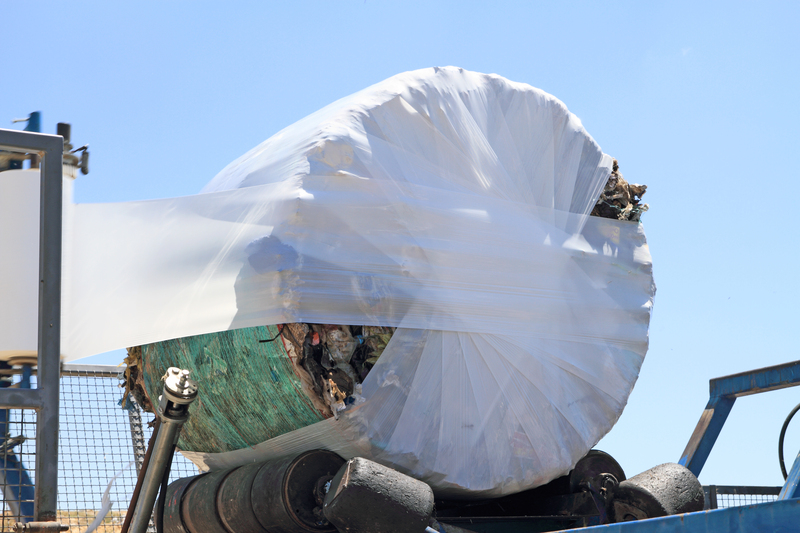Everything You Need to Know to Safely Dispose of PPE Waste
The global surge in the use of personal protective equipment (PPE) has highlighted the imperative for responsible waste management. Whether in healthcare settings, workplaces, or at home, knowing how to properly dispose of PPE waste is crucial for environmental sustainability, personal safety, and public health. This comprehensive guide delves into the best practices, legal requirements, and tips for safe PPE waste disposal, ensuring you do your part in keeping communities and ecosystems safe.
What is PPE Waste?
PPE, or Personal Protective Equipment, includes items such as masks, gloves, gowns, face shields, and eye protection. These materials are critical for safeguarding individuals from disease, hazardous substances, and environmental threats. However, after use, PPE becomes a potential hazard in itself, often contaminated with biological agents or chemicals.
- Masks (surgical, N95, fabric, and respirators)
- Gloves (vinyl, latex, nitrile, and plastic)
- Protective garments and gowns
- Face shields and goggles
- Disposable shoe covers, head covers, and aprons
Correct disposal of PPE waste is vital to prevent potential infection spread and environmental contamination. Let's explore how to manage this specialized waste stream safely and effectively.

Why Is Safe Disposal of PPE Waste Important?
Mismanaged PPE waste can have far-reaching consequences. Improperly discarded items may harbor viruses, bacteria, or hazardous chemicals, presenting risks to:
- Waste handlers and sanitation workers
- Members of the public, especially children and the elderly
- Wildlife and domestic animals
- The natural environment (soil and water contamination)
During pandemics, such as COVID-19, inappropriate disposal can contribute to community transmission of disease. PPE, particularly single-use masks and gloves, often end up littering streets, waterways, and landfills, posing a serious environmental threat.
Types of PPE Waste and Their Risks
1. Infectious PPE Waste
Used in healthcare and quarantine settings, these items are often contaminated with pathogens. Examples include masks, gloves, or gowns worn when treating infectious patients.
2. Non-infectious PPE Waste
Public use, occupational, and household PPE not exposed to medical waste. While generally less hazardous, large-scale accumulation presents environmental concerns.
3. Chemical or Industrial PPE Waste
Used during handling of hazardous materials, pesticides, or industrial chemicals. This PPE can carry toxic residues and should be managed as hazardous waste.
Legal and Environmental Regulations
Regulatory frameworks vary globally, but many countries have established strict PPE waste management guidelines, especially for healthcare facilities. Key points include:
- Biohazardous waste must be segregated and labeled
- Certain categories require incineration or specialized treatment
- Transport and disposal must adhere to environmental laws
- Organizations must train staff in correct PPE disposal protocols
Non-compliance can result in fines, shutdowns, or legal actions. Always consult local, regional, and national regulations for the most current requirements on PPE waste disposal.
How to Safely Dispose of PPE Waste at Home
Step-by-Step Guide for Households
- Remove PPE Carefully: Avoid touching the outside surfaces. Use hand sanitizer or wash hands before removal.
- Place in a Lined Bin: Dispose of used PPE in a dedicated trash bag, ideally a pedal-operated bin with a lid.
- Seal the Bag: Once full, tie the bag securely to prevent leakage.
- Dispose in General Waste: Most household PPE can be placed in the general waste bin. Do not recycle used masks or gloves.
- Practice Hand Hygiene: Wash hands thoroughly after handling PPE waste.
Tip: If anyone in the household is in quarantine or isolation, double-bag PPE and mark it as potential infectious waste. Hold it for at least 72 hours before discarding with general waste where possible.
PPE Waste Disposal in Healthcare and Workplace Settings
Medical and workplace environments demand stricter procedures for PPE waste management. Key steps include:
Segregate Waste at the Source
- Color-coded bins (e.g., yellow for infectious waste, black/green for general waste)
- Clear signage and staff training in correct bin usage
Contain and Transport PPE Waste Safely
- Use heavy-duty, leak-proof bags
- Never overfill bins or bags
- Transport bags safely using trolleys/carts to minimize exposure
Treatment and Final Disposal
- Autoclaving (steam sterilization) for infectious PPE
- Incineration for contaminated or hazardous PPE
- Use of licensed waste contractors for off-site disposal
Note: Never dispose of clinical PPE waste in standard landfill or recycling streams.
The Environmental Impact of Improper PPE Waste Disposal
The COVID-19 pandemic led to a surge in PPE waste, with millions of masks and gloves ending up in oceans, rivers, and parks. This litter presents a choking hazard to wildlife, contributes to microplastic pollution, and disrupts ecosystems.
- Masks and gloves can take hundreds of years to decompose
- Plastic fragments leach toxins into soil and waterways
- Microplastics enter the food chain, affecting humans and animals alike
*It is everyone's responsibility to ensure that PPE is disposed of safely and sustainably to protect the planet and future generations.*
Innovative Solutions and Alternatives
PPE Recycling Initiatives
Some organizations are pioneering PPE recycling solutions using advanced sterilization and processing techniques. For example:
- Single-use masks can be converted into alternative fuels or building materials
- Some companies offer take-back programs for used safety equipment
Always ensure PPE is clean and free from contaminants before attempting to recycle. Confirm with local authorities whether such facilities exist in your area.
Switching to Reusable PPE
Where safe and practical, reusable PPE--such as washable cloth masks and gowns--dramatically reduces waste generation. Ensure proper cleaning and disinfection protocols are followed.
Best Practices for Reducing PPE Waste
- Assess Need: Use PPE only when risk mitigation requires it.
- Train Staff: Ensure users know correct donning, doffing, and disposal procedures.
- Implement Segregation: Separate recyclable, hazardous, and general waste streams.
- Partner with Certified Contractors: Work with licensed hazardous waste companies.
- Promote Public Awareness: Display clear guidance for mask and glove disposal in public areas.
Pro Tip: Host regular training sessions and audits to maintain compliance and improve PPE waste management efficiency.

Frequently Asked Questions (FAQs) about PPE Waste Disposal
Can used masks and gloves be recycled?
Unfortunately, most single-use PPE cannot be recycled through standard programs due to contamination risks and mixed material composition. Specialized recycling streams may exist in some regions--check with local waste authorities.
Is it safe to throw used PPE into general trash?
For non-medical PPE waste, placing items in sealed bags in general waste is typically acceptable. Never litter PPE or flush items like masks or gloves down toilets.
What should I do if my community lacks PPE waste collection?
Double-bag PPE waste and mark it clearly. Encourage local leaders to review updated guidelines to establish safer waste handling policies.
Are there penalties for improper PPE waste disposal?
Yes, improper disposal, especially of infectious or hazardous PPE, may result in fines or legal action for individuals and organizations.
Conclusion: Your Role in Safe PPE Waste Disposal
The surge in PPE usage is a necessary measure for public health and safety, but it brings new challenges for sustainable waste management. By following the step-by-step guidance above, adhering to local regulations, and spreading awareness, you help:
- Protect sanitation workers and waste handlers
- Limit the spread of infection
- Minimize environmental impact
- Ensure a cleaner, safer community
Stay informed, make responsible choices, and be part of the solution. *Proper PPE waste disposal saves lives and safeguards our environment.*
Additional Resources
- EPA: Managing PPE Waste
- CDC: Disposing Contaminated PPE
- WHO: Water, Sanitation, Hygiene, and Waste Management for COVID-19
For detailed, location-specific guidance on PPE waste disposal, consult your local health department or waste management authority.